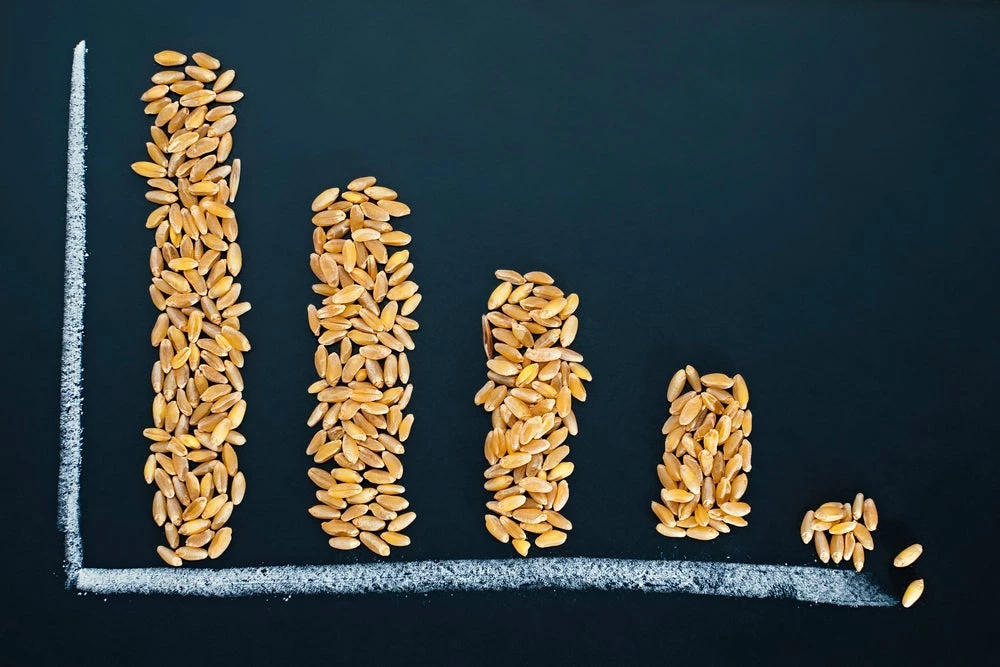Tracking progress towards the Sustainable Development Goals (SDGs) is a priority for the development community, and the subject of the recent 2023 SDG Atlas—a groundbreaking data visualization and interactive storytelling platform, powered by the World Bank, which keeps track of the progress made towards achieving the 17 Global Goals.
One of these goals, SDG 2, pertains to achieving zero hunger by 2030. Recent official data on the indicators used to track progress in this specific goal reveal a concerning trend: SDG 2 data is off track. Particularly data on SDG 2.1.2, which measures the Prevalence of Moderate or Severe Food Insecurity, has been on the rise since inception of the data series in 2014.
This claim is not new. A recent blog "Are SDGs 1 and 2 Diverging?" highlights the need for better data to monitor progress towards SDGs related to poverty and food security. It points out that the divergence between SDG 1 (No Poverty) and SDG 2 (Zero Hunger) is amplified in data-poor regions, emphasizing the importance of improving data coverage, standards, and transparency, particularly in low and middle-income countries. The blog suggested leveraging new tools like machine learning, satellite imagery, and remote sensing data to enhance data accuracy and fill gaps in surveys.
To aid in tracking progress towards SDG 2, the World Bank has introduced the World Food Security Outlook (WFSO) database, an innovative a machine learning model-based data series. This database is focused on the monitoring and analysis of global severe food security issues.
How does the World Food Security Outlook (WFSO) database work?
The database encompasses historical, preliminary, and forecast data concerning severe food insecurity on a global scale. The primary goal of this dataset is to offer more timely and comprehensive statistics for all countries, thereby contributing to the development of more effective strategies and improved outcomes, particularly in regions with limited data availability. Additionally, the WFSO data enhances transparency in global food security numbers by tracking regional and global figures and breaking them down by individual countries.
The WFSO is published three times a year, aligned with the releases of the International Monetary Fund's World Economic Outlook (WEO) and the Food and Agricultural Organization’s The State of Food Security and Nutrition in the World (SOFI) report. Its key components encompass various aspects such as the prevalence of severe food insecurity, estimates for countries without official data, the population sizes of severely food-insecure individuals, and the necessary financial support for safety nets.
One of the primary purposes of the WFSO is to complement the official data from the Food and Agriculture Organization (FAO) published in the State of Food Security and Nutrition in the World (SOFI) report. It plays a crucial role in filling data gaps for countries that are not covered by SOFI. Additionally, it offers a forward-looking perspective based on a machine learning model that utilizes data from the World Bank's World Development Indicators (WDI) database for model training and the International Monetary Fund's (IMF) World Economic Outlook (WEO) to generate food security projections that align with economic forecasts. This can help policymakers integrate food security considerations into their economic planning. The WFSO also includes estimates for safety net financing needs, following past International Development Association (IDA) approaches originally used in IDA (2020).
These innovative methods for addressing data gaps and generating more timely estimates are part of a larger initiative to not only enhance data quality but also facilitate prompt decision-making. Previous versions of the outlook have been used to estimate demand for Early Response Financing under the IDA Crisis Response Window, in Bank regional economic updates and to update G24 on food security financing perspectives. The preliminary estimates also informed the World Bank’s comprehensive global response to the ongoing food security crisis, with up to $30 billion in existing and new projects in areas such as agriculture, nutrition, social protection, water and irrigation. More recently, motivated by the long-term outlook, The World Bank has included food and nutrition security among the eight global challenges to address at scale. In the 15 months leading to June 2023, the Bank has mobilized $45 billion — surpassing its initial projected commitment of $30 billion.
The WFSO is supported by Food Systems 2030, a multi-donor Trust Fund, initiated by the World Bank, aimed to establish a sustainable food system that enhances livelihoods and ensures safe, affordable, and nutritious diets for all. It focuses on innovative business practices and reshaping market and institutional incentives for better food systems. The fund also provides policy advice, analytical products, and engages with the private sector to achieve a food system beneficial for health, the planet, and the economy.
A global overview on food insecurity: where do we stand and where are we heading to?
As indicated by the map widget, historical estimates offer crucial insights into country-level contributions to global figures and uncover interesting trends. It's important to note that historical estimates from earlier periods are subject to higher levels of uncertainty. Additionally, the Prevalence of Severe Food Insecurity indicator is calculated based on the Food Insecurity Experience Scale (FIES), which may encompass psychological aspects of food insecurity not necessarily reflected in historical malnutrition data.
But, when playing over the time-lapse, one can see that the global improvements in food security conditions observed in the early 2000s were primarily driven by advancements in larger countries in Latin America and Asia. Meanwhile, many smaller-population African countries have been experiencing a long-term deterioration in food security, which accelerated after the great financial crisis of 2008 and the coinciding global food price crisis that resurged once more in 2011. Following the Arab Spring starting around 2010, some Middle Eastern and North African countries worsened their food insecurity indicators.
Globally, the scenario is not much different. Official data starting from 2014 shows a continued rise in food insecurity, with an acceleration during the pandemic and the Russian invasion of Ukraine.
Nonetheless, looking ahead, projections indicate that global food insecurity conditions are expected to stabilize. The World Bank Food Security Update for December 2023 further analyzes the trends projected in the October 2023 WFSO. In summary, the latest projections suggest that global food security conditions are gradually stabilizing, but disparities between income groups are increasing.
For further readings on food security trends, please visit our Agriculture & Food blog.






Join the Conversation